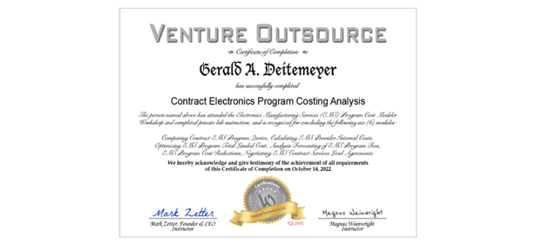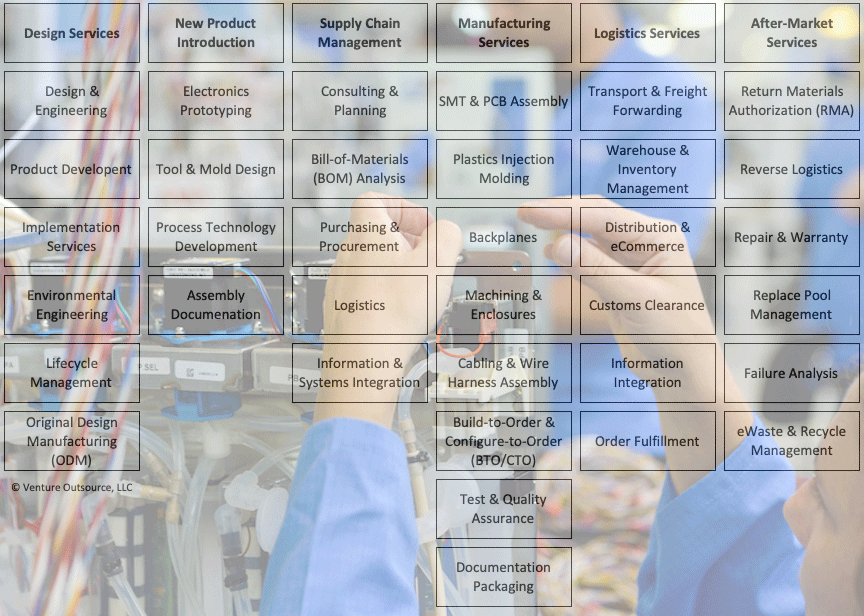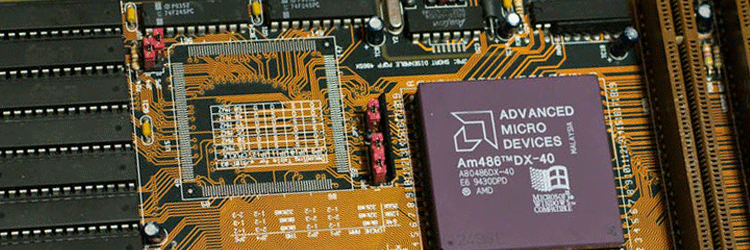Contract Electronics Reshoring vs In-House Manufacturing
When contract EMS manufacturing outsourcing is not the answer. This study of a medical device RF manufacturer facing rising costs offers insight to enterprise COOs and supply chain operations executives.

For technology manufacturing executives, deciding whether to outsource production - or stick with in-house manufacturing - can feel like navigating a maze. The stakes are high, especially in industries like medical electronics, where precision, cost, and scalability are critical. A structured decision-making process, grounded in scenario modeling, can simplify this complex choice, helping leaders weigh trade-offs and uncover unexpected opportunities.
This article explores the nuances of outsourcing, outlines four common contract manufacturing agreements, and explains the return on invested capital (ROIC) formula to guide strategic decisions. Whether you're considering outsourcing, reshoring, or switching electronics manufacturing services (EMS) providers, read on for actionable insights.
Outsourcing dilemma: A case study
Consider a Silicon Valley-based medical device manufacturer producing radio-frequency (RF) generators and disposable needles for tissue ablation. The company enjoyed strong profit margins by manufacturing in-house but faced a challenge: its high-cost facility was underutilized due to low production volumes. Overhead costs in Silicon Valley were eating into profits, leaving money on the table despite growing demand.
To address this, the company explored outsourcing. Proposals from EMS providers specializing in medical electronics offered unit costs significantly lower than the company’s fully loaded in-house costs. However, management realized they’d need to maintain substantial infrastructure like quality control, supply chain oversight, and vendor coordination...to manage an outsourcing strategy effectively.

These internal support functions, often overlooked by first-time outsourcing, added costs but still kept outsourcing cheaper than in-house production.
Strategic alternative emerges
As the company weighed its outsourcing decision, a game-changing opportunity arose: a merger with a high-volume medical device manufacturer in a low-cost, rural Eastern U.S. region. This company’s sales force complemented the Silicon Valley firm’s offerings, and its 60,000-square-foot facility promised economies of scale. By modeling scenarios, the company found that integrating its RF disposable needle production into the Eastern facility, with incremental direct labor, slashed unit costs. Shared overhead between the two product lines further amplified savings, nearly matching the cost benefits of outsourcing.

The merger also offered a key control advantage. By keeping manufacturing in-house via the acquisition strategy, the company avoided reliance on external EMS providers, maintaining oversight of quality, intellectual property, and production timeline. This was considered a premium for a medical device firm where precision is non-negotiable.
Why scenario modeling matters
This case illustrates the power of scenario modeling in manufacturing decisions. By comparing outsourcing, in-house production, and the merger, the company uncovered a solution that balanced cost, control, and scalability. Analyses of these types can yield surprising results, whether for startups with limited resources or enterprise manufacturers with steady volumes. Tools like costing modelers or ROIC models help quantify trade-offs, ensuring decisions align with long-term goals, which can also be defensible when presenting to corporate boardrooms.
Four types of manufacturing outsourcing contracts
Outsourcing agreements vary based on scope, risk, and control. Understanding these options is crucial for supply chain executives. Below are some brief thoughts on each.
- Turnkey contracts are when the EMS provider handles everything. From design, procurement, assembly, and testing. Ideal for companies with limited resources but carries risks of dependency and IP exposure.
- Consignment contracts are when manufacturer supplies materials and EMS manufacturers focus on assembly. This offers cost control but requires robust supply chain management.
- Joint development manufacturing (JDM) is collaborative. This model is when the OEM company and EMS (or ODM/JDM) firms co-design products. This balances innovation and cost but demands strong partnership trust.
- Build-to-order (BTO) is when contract electronics providers produce to specific orders, minimizing inventory costs. These model is mostly best for low-volume, high-mix products but may limit scalability.
Each model impacts costs, quality control, and operational flexibility differently. Scenario modeling helps determine which model aligns with your business needs.

Understanding ROIC in manufacturing decisions
Return on invested capital (ROIC) is a critical metric for evaluating outsourcing or capacity planning and acquisition decisions. ROIC measures how efficiently a company uses capital to generate profits.

ROIC is calculated as:
ROIC = (Net Operating Profit After Tax) / (Invested Capital)
Net operating profit (after tax): Operating income minus taxes, reflecting profits from core operations.
Invested capital: Total capital tied up in the business, including plant, property, and equipment (P,P&E) for in-house manufacturing or working capital for outsourcing.
For the medical device company in this study, ROIC analysis compared:
- In-house (Silicon Valley) with high P,P&E costs lowered ROIC due to underutilized assets.
- Outsourcing meant lower capital investment (no P,P&E) but ongoing management costs slightly reduced ROIC benefits.
- Merger with an Eastern facility meant shared overhead and lower labor costs boosted ROIC, nearly matching outsourcing while retaining control.
By modeling ROIC across scenarios, the company quantified the merger’s financial edge, validating its strategic choice.
Key takeaways for executives
Using data-driven tools to compare outsourcing, in-house production, or acquisitions is necessary. It's also important to include hidden costs like internal support functions or KYC compliance for outsourcing.
Balancing cost and control cannot be underscored enough. Outsourcing cuts costs but sacrifices oversight. Mergers or reshoring can offer similar savings with greater control, as seen in the case study.

Companies can better leverage ROIC and quantify capital efficiency to guide decision-making so long as you have accurate and actionable data, especially when weighing high-cost facilities against low-cost alternatives.
Choosing the right EMS provider and outsourcing model that aligns with your volume, expertise, and risk tolerance is worth the time invested.
For technology manufacturing leaders, outsourcing decisions hinge on more than cost alone. By modeling scenarios, understanding contract types, and applying metrics like ROIC, executives can make informed choices that drive profitability and growth. Whether you’re a startup or a seasoned manufacturer, a strategic approach ensures you don’t just save mone - you build a resilient, competitive operation.
Manufacturers seeking to acquire additional manufacturing capacity through joint ventures, partnerships, mergers or acquisitions can read more about Venture Outsource M&A services here.
______________________________________________________
About
What matters when formulating contract electronic strategy? How do you identify supplier profit centers and what are you doing to protect against margin erosion for your outsourcing programs? Why do provider capabilities often not match capabilities they claim? How are you benchmarking your supply chain against competitors?
I’ve spent 25+ years in contract electronics industry setting up contract electronic divisions and running operations, protecting EMS program profits, manufacturing capacity M&A and more. I run a technology solutions firm. A lot of times this means asking the right questions.
______________________________________________________




